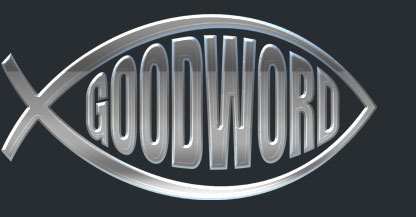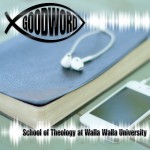| Host: | Alden Thompson |
|---|---|
| Guests: | Dave Thomas and Paul Dybdahl |
| Quarter: | The Gospel, 1844, and Judgment |
| Lesson: | 15 |
| Sabbath: |
Interpreting Apocalyptic Prophecies
Note: This appendix is a reprint of the first lesson of the PROBE Study Guide, 2002.2
| Key biblical passages: | Isa 65-66; Ezek 40-48; Dan 2, 7-12; Zech 14; Matt 24-25; Rev 1-22 |
| Study Guide Author: | Alden Thompson, School of Theology, WWC |
Table of Contents for Lesson #1:
- A (lengthy!) note from the author of the Study Guide.
- Questions to address for the first lesson
- Resources for further study
1. A NOTE FROM THE AUTHOR OF THE STUDY GUIDE (ALDEN THOMPSON):
The theme for this quarter’s lessons, “Great Apocalyptic Prophecies,” presents the potential for significant repetition of materials presented in previous Study Guides. By my count, since the Autumn of 1994, this will be at least the ninth time that PROBE discussions have focused on one or more aspects of Revelation 12-14. Such repetition invites explanation.
The study guides for PROBE are prepared by faculty members in the Walla Walla College School of Theology. We do not select our own topics, but work with those presented in “The Adult Sabbath School Bible Study Guide,” prepared by the Sabbath School and Personal Ministries Department of the General Conference of Seventh-day Adventists.
Those of us who work with PROBE and who also teach a “live” Sabbath School class become acutely aware of patterns and tendencies in the selection of topics. My first PROBE Study Guide, for example, was on Proverbs, 4th quarter of 1991. This Study Guide, on “Great Apocalyptic Prophecies,” will be my 16th out of a total of 43 for that period. Since I authored the Study Guide for Proverbs in 1991, I was startled when Proverbs was repeated for the 4th quarter of 2000, with virtually the identical lessons published in 1991.
Why the repetition? The immediate reason was that the “scheduled” set of lessons did not arrive in time to be edited for publication. And editing does take time, especially since Adventists are still attempting to serve the entire world with one standard set of adult lessons. In English-speaking countries, the Collegiate Quarterly provides some diversity. But otherwise, the “Adult Sabbath School Study Guide” is distributed throughout the world for translation into the various languages needed by the world church. Imagine the enormous challenge of attempting to prepare one set of lessons for use in all cultures of the world and by people at every conceivable level of education.
In my view, the easiest way to simplify the task would be to base the lessons on specific books of the Bible and set passages of Scripture. This would allow for unity in diversity – unity by focusing on the same passage of Scripture each week, and diversity by encouraging varied ways of meeting the full spectrum of the world’s cultural and educational needs. In short, each week’s lesson would encompass a significant passage of Scripture, a “larger” context, rather than a topic supported by a host of “smaller” individual key texts. Such a “quarterly” could fit on a bookmark. You could tuck it into your pocket or purse and easily take it anywhere in the world. With such a lesson plan as the primary focus, Adventists could then publish as many commentaries, as many quarterlies, as many study guides, as desired and needed, whether official or unofficial.
In fact, in the 1980s the world church began to move cautiously in that very direction when it embarked on a ten-year plan to study the entire Bible through the Sabbath School lessons. The plan was launched in the first quarter of 1985 by Gordon Hyde’s lessons on the Gospel of Mark. I was so excited that I wrote an enthusiastic letter to the Adventist Review which was published in the issue of March 14, 1985. My enthusiasm was fueled, no doubt, by the fact that I had been invited to write a Study Guide on Kings/Chronicles. The tentative publication date was 1990.
But those optimistic days did not last. The plan was soon overwhelmed by a wave of complaints. Studying the whole Bible book-by-book was too hard and forced us to confront difficult passages. So the ten-year plan was diluted, so to speak, with topical lessons, allowing authors and editors greater freedom to select favorite passages and avoid difficult ones.
My own proposed quarterly on Kings/Chronicles was caught in the wave of conservatism and my initial set of lessons was rejected by the committee. When I explained my intentions in a substantial appeal, however, the committee granted me permission to try again with a revised edition. But after monitoring the Adult Study Guides more closely, I elected not to revise and resubmit, for it had become clear to me that the assumption of biblical “inerrancy” (free from error) had become a guiding principle in the editing of the lessons. An inerrancy conviction enormously complicates the task of reading the books of Kings and Chronicles, especially if one studies them together and makes comparisons between them. But now, some 18 years after I was first invited to write a quarterly on Kings/Chronicles (1984), the official edition will soon appear, written by James Zackrison, Director of the General Conference Sabbath School Department. It’s next in line, scheduled for the third quarter of 2002. I will read it with interest. [The alternative study guide for the Kings/Chronicles study guide is available on line at the following link:
www.people.wwc.edu/staff/thomal/writing/kingsandchronicles.htm
My original intention for the Kings/Chronicles lessons, as I carefully explained to the editors, was to exploit the differences between the two works as a way of showing the radically different purposes behind them. Samuel/Kings was written shortly after the fall of Jerusalem (587/86 BCE) to teach that disobedience leads to disaster. Given such a purpose, even the sins of Israel’s greatest kings were laid out with brutal honesty.
By contrast, the Chronicler wrote sometime after 400 BCE to encourage a struggling band of returned exiles. In the face of modest numbers and a puny temple, the Chronicler celebrated Israel’s past: the glories of her kings, the magnificence of her temple. In light of his purpose to encourage, the author often simply omitted the ugly. Exhibit A: he didn’t say a peep about David’s affair with Bathsheba.
I had hoped that my previous writing on “inspiration” could prepare the way for such an approach. In December, 1981, the Adventist Review had published my five-part “Sinai to Golgotha” series detailing Ellen White’s growth and development. It stirred up such interest that six months later AR dedicated a full issue (July 1, 1982) to follow-up discussion. Spectrum (June 1982) published my review of Walter Rea’s book, The White Lie, as well as my review of George Rice’s Luke: A Plagiarist? (April 1985). My interest in Rice’s book ultimately led to a four-part series on “inspiration” in the Adventist Review (September 1985). That series, in turn, led to the formal invitation from the Review and Herald Publishing House to write Inspiration: Hard Questions, Honest Answers. It was published in 1991, having passed through every step of the “official” procedure.
Because of my involvement in Sabbath School teaching and my responsibilities for PROBE, I pay close attention to the Adult Sabbath School Study Guides. Of special interest are the things we avoid and the things we repeat. The topical format significantly enhances the possibility of both.
With this quarter’s lessons on “Great Apocalyptic Prophecies,” repetition is largely what we are getting. We do not look at the tough stuff, like Daniel 11 or Zechariah 14, the apocalyptic prophecies which might encourage us to re-think our positions. Instead, we fall back on the ones we’ve always heard. Why the repetition? If all or part of Revelation 12-14 is repeated at least nine times (my count) over a period of eight years (1994 to 2002), what does that tell us about the church? Or at least about the thinking of those responsible for the Sabbath School Study Guide?
If I had to capture the “why” in one word, it would be “fear” – fear of change, on the one hand; and on the other, fear that we are losing our memory, our identity, our mission. And those are legitimate concerns. Change, whether gradual or sudden, can be very destructive. As for “loss of memory,” that may be the greatest challenge facing the church. Older members are drawn to their TV screens by 3ABN (Three Angels’ Broadcasting Network). There they hear the “certain sound” they have always heard and it is reinforced with visual images. Walk through any Adventist retirement community and you’ll see what I mean.
Is it possible that we are forgetting how to explore? If we do, spiritual danger lurks close at hand. That was Ellen White’s concern in 1888: “When no new questions are started by investigation of the Scripture, when no difference of opinion arises which will set men to searching the Bible for themselves to make sure that they have the truth, there will be many now, as in ancient times, who will hold to tradition and worship they know not what” (Testimonies 5:707 [1889]).
Meanwhile, the younger generation is also glued to screens of all kinds – video, TV, movie — but with a radically different menu. The stuff they watch constantly dismantles their faith. They can’t forget their Adventism because they’ve never learned it in the first place. Their world is so different from previous Adventist worlds that conversation between the generations has become almost impossible.
The solution to this dilemma? The steady diet of repetition provided by the Sabbath School Lessons implies that indoctrination is the answer. That might have done the trick for a more obedient generation. But in today’s world, it works like pulling the cat’s tail to get it into your lap. In our free-wheeling independent culture, force-feeding does not nurture; it gags. Thus we run the risk of adding rejection and rebellion to simple neglect.
But we Adventists are incurably apocalyptic. It’s in our blood. We live in hope. And my goal for this study guide is to help us explore ways of revitalizing our apocalyptic heritage and making it meaningful.
We must build bridges between the old and the new and explore the new in the light of that which never changes. In Adventist jargon, that is the match-up between “present truth” (the cutting edge) and “landmarks” (the immoveable anchor). Throughout this Study Guide, you can expect considerable emphasis on a “both/and” model. My study of Scripture and the writings of Ellen White has convinced me that when times change, God’s people often move through a “both/and” period. Early Christians, for example, considered themselves simply to be good Jews who had accepted the Jewish messiah. It took many years and much bitter controversy to drive the deep wedge between Jews and Christians which we almost take for granted today..
If one is not afraid of “change,” then one can see a great deal of it in the Bible itself. A quick survey of the forms of community life found in Scripture reveals a striking sequence of change. Under the patriarchs, God’s people moved from tribal freedom (Abraham, Isaac, and Jacob) to slavery in Egypt (between Joseph and Moses), to charismatic leadership (Moses, Joshua, Judges), to independent monarchy (Saul, David to Zedekiah) to exile (Babylon), to vassalage under foreign powers (Medo-Persia, Greece, Rome), to an independent sectarian community of choice (Jesus and the apostles). And each change involved dramatic differences, both in the way God’s people related to God, as well as in the way God related to the people..
“Apocalyptic” prophecy itself represents a dramatic change from so-called “classical” prophecy. Arriving late on the biblical scene, apocalyptic became popular after national hopes had been dashed by foreign domination. Some of the more striking contrasts might be summarized (and over-simplified) as follows:
Classical Prophecy—–Apocalyptic Prophecy
national—–universal
corporate—–individual
usually (but not always) conditional—–fixed, but reapplied as if conditional
this-worldly goal—–other-worldly goal
a future hope, but not vividly eschatological—–future hope directly linked with eschatology
literal and practical applications—–symbolic and mysterious imagery
Because of differing assumptions brought to the text, nothing divides believers (and non-believers) so thoroughly as the interpretation of apocalyptic and eschatological passages. The various approaches may be summarized under four basic headings:
- Preterists are modern “liberals” who typically reject on-going divine involvement in human affairs. Thus they deny any future application for apocalyptic prophecy. For them all apocalyptic is simply a reflection of the past, a mirror of the author’s own day; they do not live in hope that God will come and restore the earth.
- Futurists are modern “conservatives” (dispensationalists) who are so convinced of God’s control of history that they deny all forms of conditionality. For them, God’s prophecies to Israel in the Old Testament never “failed,” they simply apply to the future. Futurists look for the “rapture” and a literal temple rebuilt in Jerusalem; they expect David’s kingdom to be reestablished here on earth, to flourish during a this-worldly millennium, complete with childbirth, death, and animal sacrifice. With the demise of historicism after 1844, (dispensational) futurism has become by far the most popular approach to eschatology and apocalyptic in conservative circles today. It is the approach fueling the enormously successful set of Christian novels (over 50 million sold) linked to the movie “Left Behind.”
- Historicists are more traditional “conservatives” who preserve the Reformers’ approach to apocalyptic. Taking their cue from the succession of kingdoms in the prophecies of Daniel 2 and 7, they trace the course of history on a continuous time-line until the divine reign is established. Often tempting believers to set dates, historicism rose to prominence about 1000 CE, but in its thorough-going form, largely died out after 1844, even among SDA.
- Idealists are “moderates” who look for multiple applications of the larger “ideals,” finding meaning in both past and present while looking for God’s future kingdom. “Liberals” are perhaps best able to point out the patterns of reapplication in Scripture, but are less likely to affirm a “real” second coming and a restored earth. “Conservative” idealists who eagerly affirm the hope of a second coming often end up being very cautious for fear of being attacked by thorough-going historicists or futurists who know exactly what the future holds. To those who want a precise outline of the end time, the idea of multiple applications seems far too mushy and uncertain, in spite of many biblical examples.
In this Study Guide, I want to recognize the contributions of all four perspectives. I try to remind myself that none of the approaches is simply an impersonal “system” – they are all held by real people with honest convictions, people trying to make sense of the Bible, the world, and the future. And each approach preserves something to which I can say a hearty amen. Preterists help me understand the world in which the Bible was born. Futurists remind me that the future is in God’s hands and that it is a real future, though their particular approach to the “end” is rarely one that I find useful. Historicists preserve traditional Reformation and Adventist positions, reminding me that God acts both in history and in the present, and that beastly behavior is a persistent reality right now – we cannot simply point to the past (the preterist temptation) or to that which lies ahead (the futurist temptation). Finally, the idealists remind me that God’s ways are much more fluid, much more surprising than I generally like to admit. But I suspect there is a painful truth there which I need to learn – perhaps even learn again and again.
In the last analysis, the idealists seek the best of all worlds through multiple applications, incorporating past, present, and future. “Idealism” offers tantalizing potential for more universal applications of apocalyptic prophecies while preserving the specificity of historicist insights.
ISSUES TO ADDRESS FOR THE FIRST LESSON
The Challenge. If one is going to study “apocalyptic” in a group setting, the following tension points should be taken into account:
- A. Basic Knowledge: Veterans (old and informed) vs. Rookies (new and ignorant)
- B. Exploration vs. Preservation: “Present truth” (the new) vs. “Landmarks” (the old)
- C. Free-will vs. Divine Sovereignty: “Let me do it” vs. “Carry me, Daddy”
The Biblical Passages. Ideally, the Bible itself should provide the information and the principles to guide us in its interpretation. The problem is that none of us ever comes to the Bible or to the world “clean” – we come with our biases, assumptions, prejudices. What we can do, however, is come before God and ask Him to use the Bible to correct our biases and assumptions, and to banish our prejudices.
When it comes to the interpretation of prophecy, and especially the interpretation of end-time passages, the greatest hurdle to overcome is the “popular” view of authority. God, the ultimate authority, is imagined to be one who proclaims eternally fixed decrees, decrees which never change. In my view, that idea of authority is largely the result of sin. Not surprisingly, then, it is expressed most bluntly in those biblical narratives which feature pagan cultures. No less than four times in the story of the lion’s den, for example, it is said that the laws of the Medes and Persians cannot be “revoked” or “changed” (Dan. 5:8, 12, 15, 17). Similarly, in the story of Esther, Ahasuerus declared that the king’s edict “cannot be revoked” (Esther 8:8).
That idea of “unchanging” authority is what determines the view of “prophecy” among thorough-going futurists and historicists. Not surprisingly, they are much puzzled by the many passages in the Old Testament where the true God of Israel actually “repents,” to use the classic KJV word. Indeed, a word study in the KJV reveals that in the Old Testament, at least, God “repents” more often than anyone else. In broad outline, it can be said that the God of the Old Testament is eager to trade a failed prediction for a successful prophecy. The book of Jonah is the biblical paradigm for such a view: the predicted destruction of Ninevah failed because the prophecy was successful: the people repented of evil.
A crucial question is: How might God’s “repentance” affect our understanding of passages which speak of God’s plan for the future, and especially his plans for the “end”? The following passages, chosen from both Testaments, should inform our conclusions:
- Isa 11:1-9: A conquering messiah and a vegetarian kingdom where no one gets hurt
- Isa 19:18-25: Two great enemies of God’s people, Egypt and Assyria, join Israel in a new world
- Isa 65:17-25: A “new heavens and new earth” where childbirth and death continue
- Isa 66:22-24: A “new heavens and new earth” shadowed by the burning remnants of the wicked
- Ezek 40-48: An ideal temple of the future, but one which was never built
- Dan 2, 7-12: Kingdoms and beasts frequently reinterpreted in fresh ways throughout history
- Zech 14: A new world where sacrifice is still offered and evil only gradually disappears
- Matt 24-25: “Signs”of an end which comes as a surprise, even to the saved
- Rev 1-22: Visions of final victory for God and God’s people
What remains constant? Hope of restoration and God’s victory over evil. That is what radically separated Israel’s religion from that of her pagan neighbors. Israel lived in hope; her neighbors lived without it, for the Canaanites could only see the endless cycle of nature. The New Testament vision builds on the foundation of Israel’s hope and purifies it.
What changes? The when and the how, as well as the details of what a perfect world might look like. The principle of restoration remains constant, but the details of end-time scenarios differ dramatically.
FOR FURTHER STUDY:
Additional materials (published and unpublished) dealing with prophecy, apocalyptic, and eschatology are available at Alden Thompson’s Web site:
http://homepages.wwc.edu/staff/thomal/ The following items are most likely to be relevant at the beginning stages:
- A. An Introduction to the Book of Daniel:
Alden Thompson, “Daniel,” in Doug Clark and John Brunt, eds., Introducing the Bible, Vol. 1: The Old Testament and Intertestamental Literature (Lanham, New York, Oxford: University Press of America, 1997), 525-44. - B. An Introduction to Eschatology:
“Eschatology: The Angels Always Say the Time Is Short,” chapter originally written for Inspiration, October 1991 (unpublished). - C. An Introduction to Apocalyptic:
“Fragile Apocalypse.” G. Arthur Keough Lectureship, Columbia Union College (Takoma Park, Maryland), 27 March 1998 (unpublished)
“Certain Apocalypse.” G. Arthur Keough Lectureship, Columbia Union College (Takoma Park, Maryland), 28 March 1998 (unpublished) - D. A Biblical Perspective on Conditionality:
“Who Can Change the Mind of God?” Signs of the Times, February 1992, 25-27.




